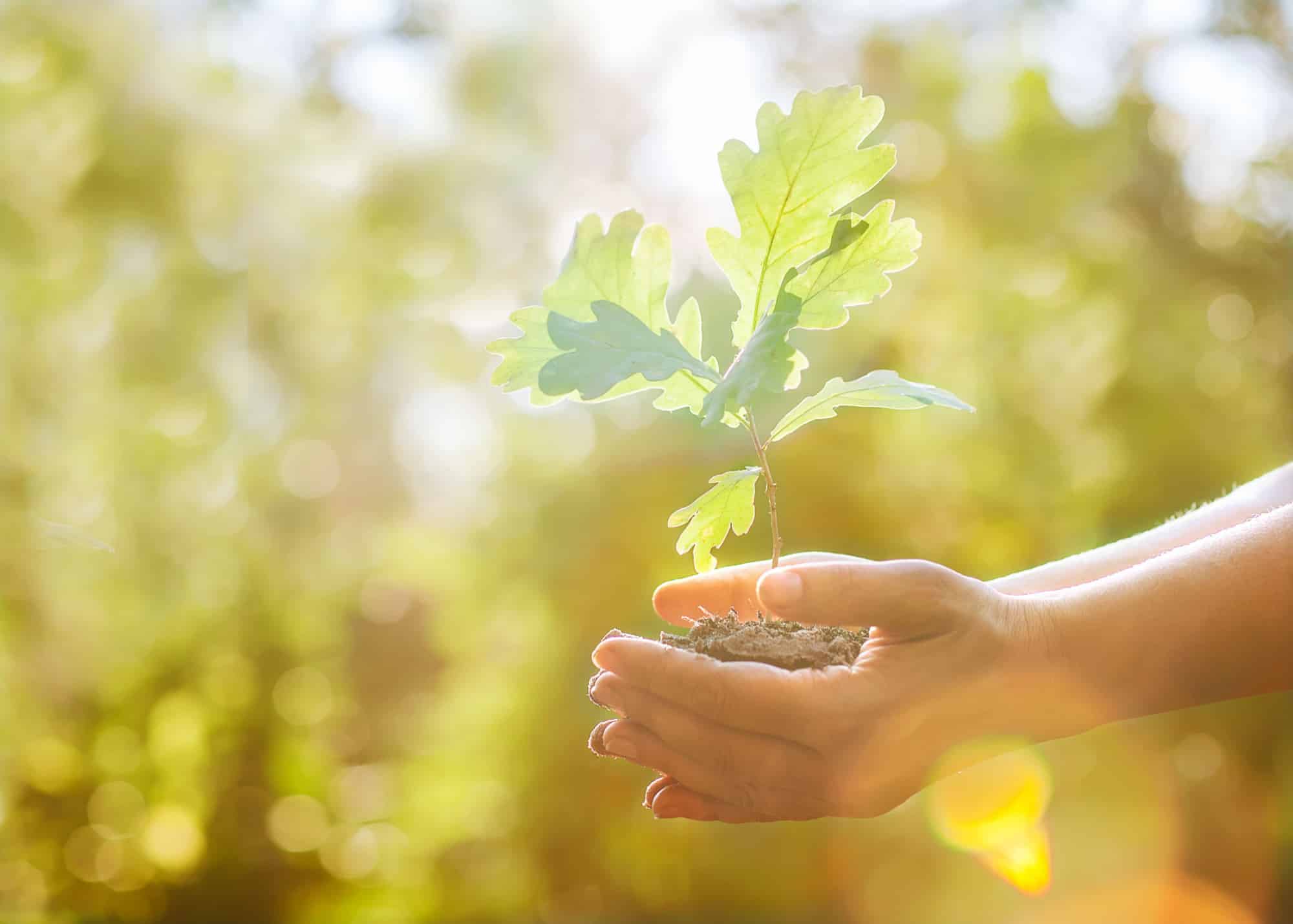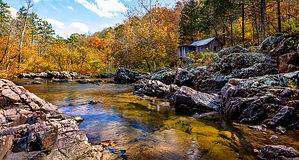Trees bring height, shape, structure, fruit, and wildlife to our gardens, but keeping them alive in the first few years can be tricky. Here’s how often you need to water a newly planted tree, plus nine important tips for strong growth.
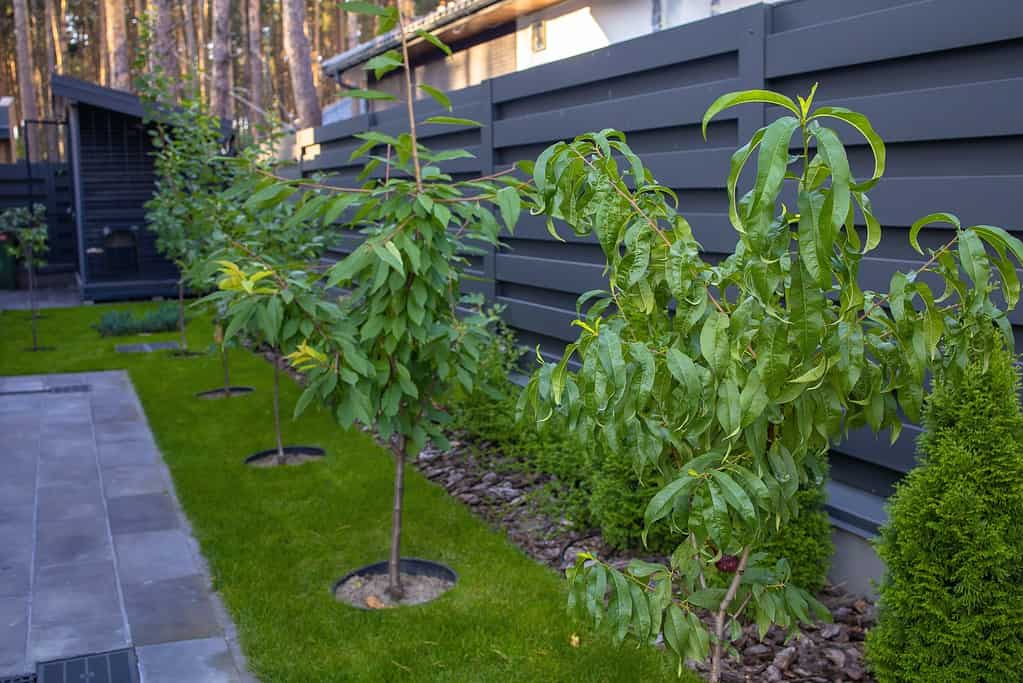
Newly planted trees need lots of water. Containers require water every day.
©Vitaliy Karimov/Shutterstock.com
How Often Do You Water a Newly Planted Tree?
- Containers — every day
- Raised beds — every other day
- In the ground — two to three times a week
Trees offer a wide range of environments, food, and shelter to wildlife, and, of course, they replenish vital oxygen supplies. They’re one of our biggest plants, and although trees are tough when they start in a new spot, they need plenty of TLC.
The frequency and quantity of watering depend on several factors, including your growing zones, the season, soil quality, and the tree species. Trees in containers need much more water than ones planted in soil. Common sense is required because if the soil feels dry, it needs water — even if you watered it yesterday.
Underwatering is the number one killer of newly planted trees. Most tree species need extra water for at least two years to lay down strong roots that establish essential soil connections.
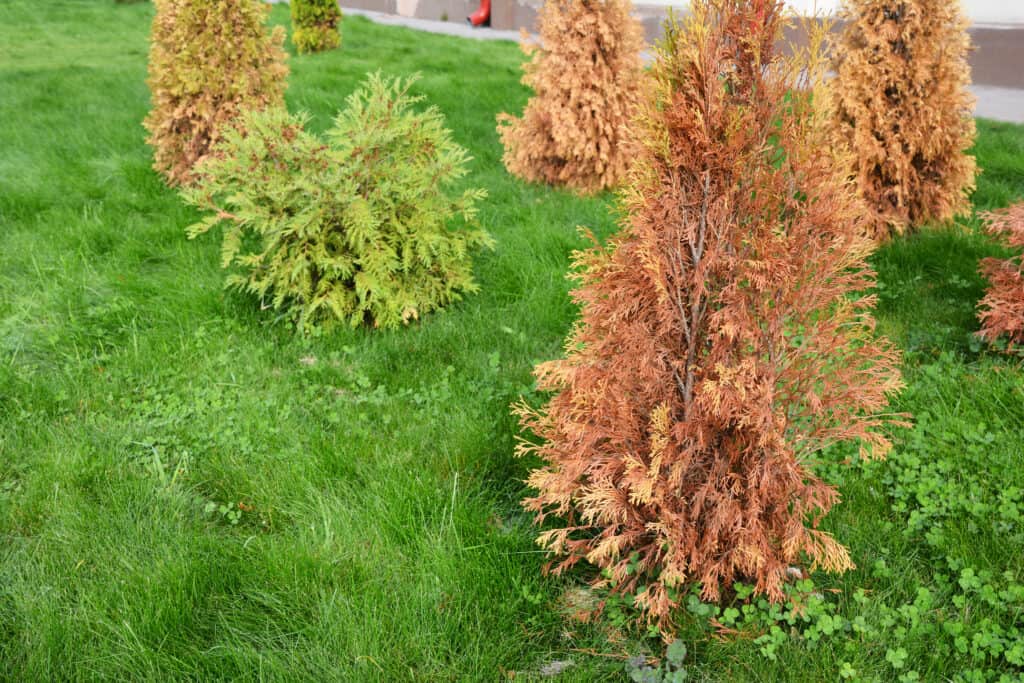
Underwatering is the number one killer of newly planted trees.
©iStock.com/Lex20
Here’s how often you should water a newly planted tree.
Before Planting
Before transplanting your new tree, make sure it’s thoroughly watered in its growing pot so that the transferred compost will easily take up water later. Dry compost is virtually waterproof, and it requires several drenchings to make it wet again.
Pots and Containers
Newly planted potted trees need water every day. It’s easy to underestimate just how much water a tree sucks up! A damp container will easily dry out in 24 hours; once that happens, your tree is under stress.
Containers dry out quickly because the sun and wind dry it out from all angles, and rainwater can’t get inside. Also, compost is more likely to dry out than garden soil due to its composition.
A saucer beneath the pot will help catch excess water but don’t leave it standing in a saucer of water for days on end because soggy soil rots roots. A containerized tree needs lots of free-draining water, not a swamp around its feet.
Containerized trees require regular water and fertilizer across their lifetime.
Raised Beds
Raised beds tend to be larger than a single tree’s container, so they’re better at holding onto moisture. Newly planted trees in raised beds need watering every other day at least, but more in hot spells. Use your common sense because if compost is starting to feel dry, it needs water, even if you watered it yesterday.
Trees in raised beds also require water and fertilizer across their lifetime.
In the Ground
New trees planted in the ground need water two to three times a week.
In general, soil is much better at holding onto moisture than compost, and rainfall soaks into tree roots.
However, water is essential for newly planted trees because they don’t have the strong root system that established trees use to pull water deep out of the ground.
If the planting hole soil is dry, fill it with water and allow it to drain away before planting a new tree. Most tree sellers advise watering ground-planted trees two to three times a week for the first two summers. Trees live for a long time. Two years is a blip to them, even though it’s a long time for us humans! At two years old, a tree is still an infant that requires care.

Trees live for hundreds of years. Water your newly planted tree for at least two years.
©Axel Bueckert/Shutterstock.com
9 Top Tips for Strong Growth
Frequent watering is important for newly planted trees. It’s very easy to underestimate how much they suck up. As well as giving them plenty of water, here are some top tips to help get that newly planted tree off to a great start.
1. Water During the Evening
Water applied at the hottest part of the day will evaporate, leaving your newly planted tree with a deficit.
Evening watering is best because there’s less water lost. Early morning watering is the next best time. However, if midday watering is all you can manage, do it then. Some water is better than none at all.
2. Water Roots, Not Foliage
There’s little point watering the trunk or foliage unless it’s a tree that loves high humidity, so aim water at its roots. Move around the tree so water is evenly distributed to the whole root ball.
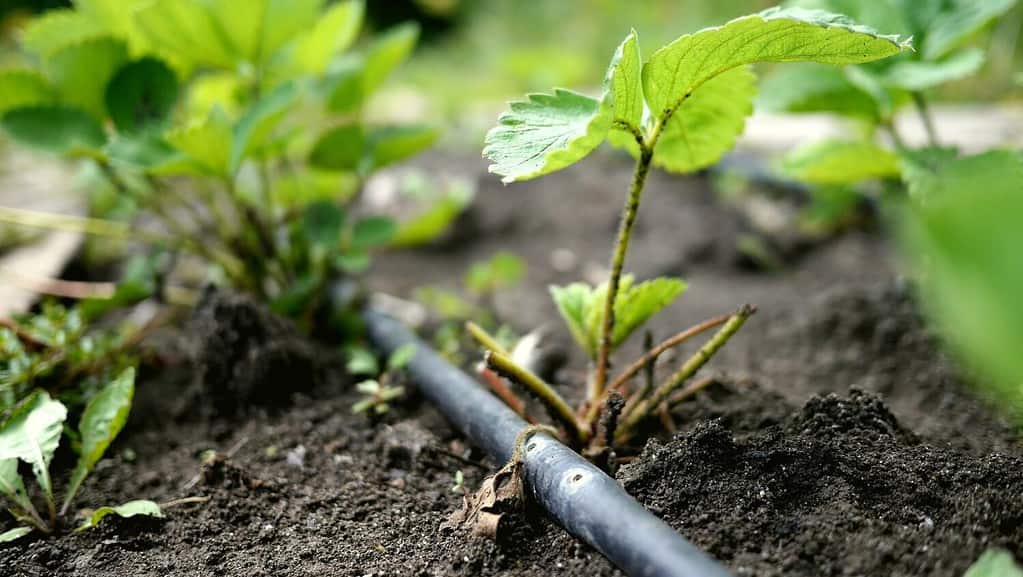
Irrigation systems help forgetful or busy gardeners water their trees.
©Nadeene/Shutterstock.com
3. Water Deeply
A deep watering every few days is much more effective than a small amount each day.
That’s because it forces tree roots deeper into the soil to find water. Small amounts of water keep the tree’s roots at surface levels, which is bad news during periods of drought.
Consider using watering kits, such as a tree watering bag or perforated pipe, to ensure water reaches tree roots. A perforated pipe buried vertically or at a 45-degree angle minimizes runoff and supports deep watering that trees really need to thrive.
4. Ensure Enough Sun Exposure
The majority of trees require plenty of sun to grow strongly. Check your new tree’s sun level requirements and plant it in a suitable spot. Evergreen conifers usually require all the sun you can muster, whereas acers and maples need partial shade. Every tree is different.
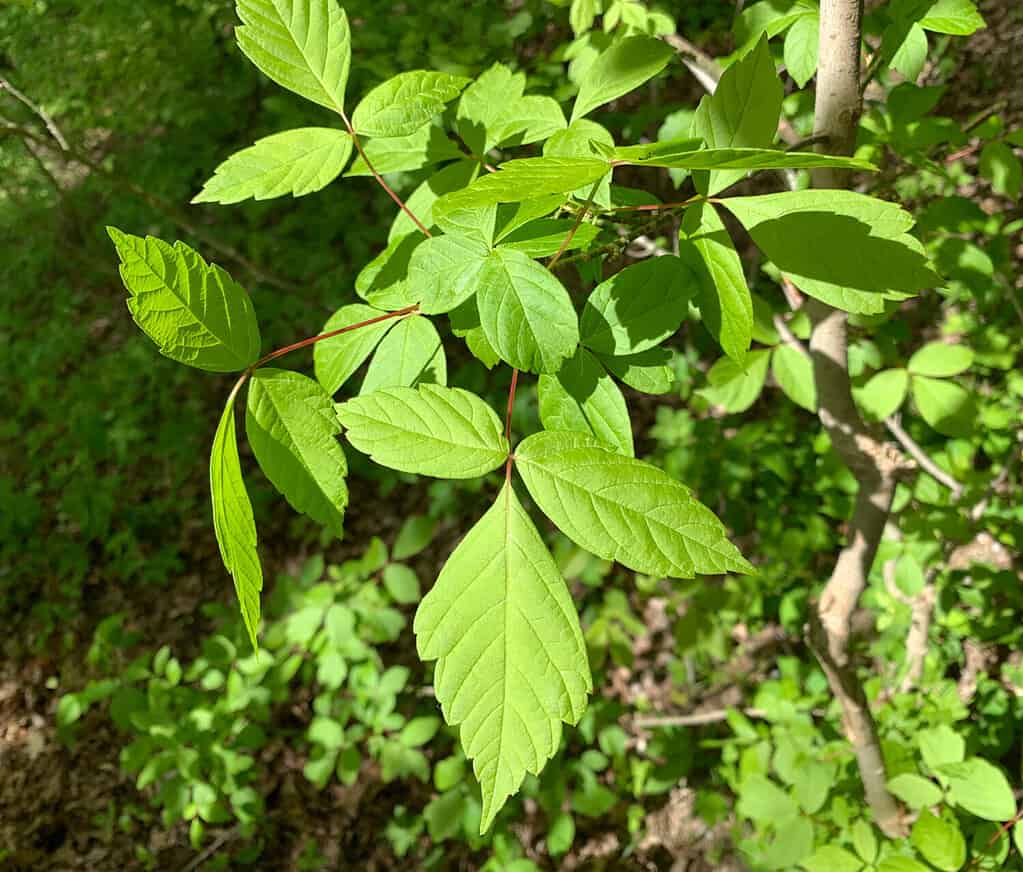
Young trees need sunlight on foliage to photosynthesize their nutrients.
©CampSmoke/Shutterstock.com
5. Enrich the Soil
Mix well-rotted organic matter in the planting hole or use top-quality tree-friendly compost in containers.
Enriched soil retains moisture, which is important for newly planted trees, and provides plenty of nutrients for strong growth.

Fill planting holes with good-quality compost before adding a tree.
©Singkham/Shutterstock.com
6. Use Mycorrhizal Fungi
Mycorrhizal fungi help establish healthy root systems by extending root reach. Mycorrhizal fungi draw in moisture and nutrients for the tree in exchange for sugar. It’s thought it offers some protection against root disease, too.
Experts believe that in the wild, neither plants nor mycorrhizal fungi would survive without the other.
7. Apply Lots of Rich Mulch
Mulch is important for all garden plants because it helps with a variety of functions.
- Controls weeds
- Preserves moisture
- If organic, it provides nutrients
- Prevents splash-up
- Preserves soil structure
- Keep roots cool or warm
Use bark chippings, mulch mats, or leaf mulch each year for the best results.

A thick layer of mulch on newly planted tree roots provides benefits such as moisture retention.
©iStock.com/beekeepx
8. A Gentle Prune Is Enough
Less is more when it comes to pruning a newly planted tree.
Trees produce their food via photosynthesis, and one of the factors they need to undertake this fascinating process is sunlight. Sunlight is absorbed via foliage, so it’s a mistake to cut off too much leafiness.
Newly planted trees only need corrective pruning. Remove broken, crossed, or diseased branches plus double leaders, but stop there, or it’ll damage the tree’s ability to manufacture food, and that slows its growth.
9. Stake (Or Not) Against Wind Rock
Most trees over four and a half feet require a supporting stake to keep them safely in the ground (or container).
Trees over four and a half feet are prone to wind rock. This is when the wind blows into a tree, and the breeze drags the trunk and crown about. In turn, this shifts its fine-feeding roots, preventing them from absorbing nutrients. It’s especially important to take trees in windy gardens, on slopes, and trees with large leafy crowns. However, young trees planted throughout housing estates in firm soil probably won’t need a stake.
Experts recommend using a stake that’s 1/3 of the tree’s height, and one of the best tie materials is a bicycle inner tube! An inner tube is flexible and strong, plus it won’t scratch your newly planted tree’s trunk. Tie it to the tree in a figure-of-eight loop tight enough to avoid excessive movement but not so tight that it digs into the trunk.

An old inner tube makes an excellent tree stake tie.
©Lolostock/Shutterstock.com
When to Water a Newly Planted Tree: Recap
Let’s recap on how often you should water a newly planted tree.
The answer is often! Newly planted container trees need daily water in summer; in a raised bed, every other day is a good bet, and in the ground, once or twice a week is usually sufficient.
Up watering regimes during hot spells, and if the soil feels dry when it’s not your official time to water, water it anyway! Trees drink a lot to establish strong root systems, and their early days are the most important growth time.
Thank you for reading! Have some feedback for us? Contact the AZ Animals editorial team.

